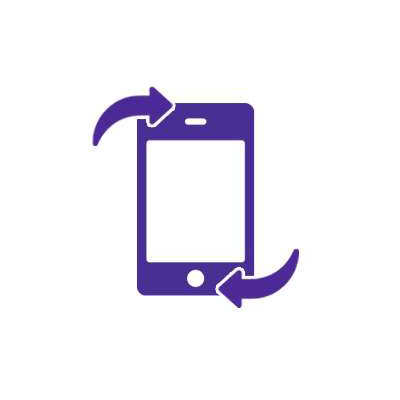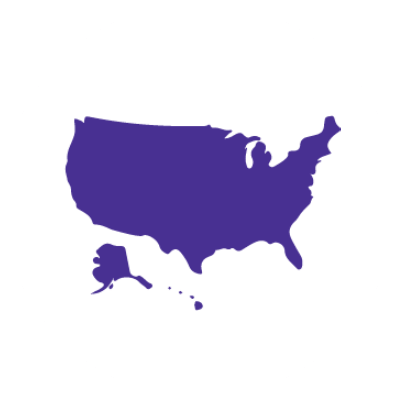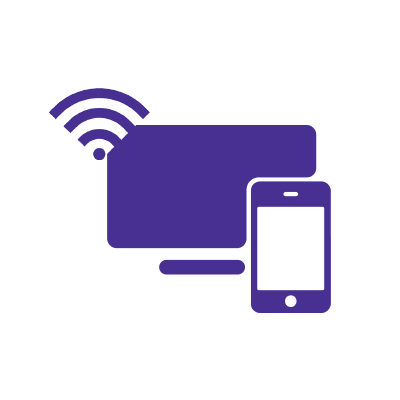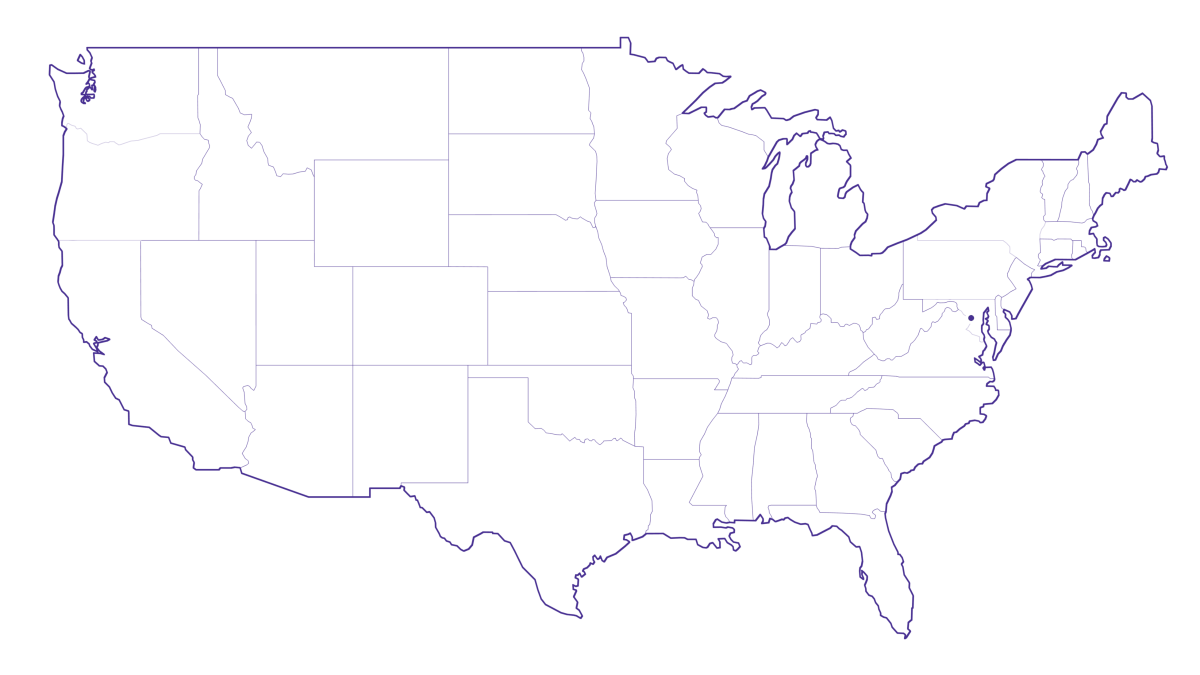How much cell phone data do I need?

Mobile data enables us to access the internet in the absence of a WiFi connection. As we become more dependent on our phones for communication, entertainment, and work, ensuring we have adequate data on them each month becomes more crucial.
In this article, we will discuss how much cell phone data you need and how much data your mobile phone uses.
This article will also explain how much data it takes to use your phone as a hotspot and how to check how much data you have left.
What you'll learn:
How much cell phone data do you need?
You can evaluate how much data you need by paying close attention to what you’re using your mobile phone for.
For instance, a person who simply uses their phone to make phone calls and text, check their emails, and sporadically browse the internet will utilize a fraction of their data compared to someone who streams videos. An hour of streaming high-definition videos uses approximately 2GB of data.
Streaming music for 24 hours only uses 1GB of data total.
A mobile data plan is a great way to guarantee you have an internet connection.
Data plans vary in price and size depending on the mobile carrier you choose. Your typical internet usage and activities will ultimately determine how much data you need and what plan you should choose.
Switching is easy
Switch & Save
Getting started with Astound is easy: just bring your phone or find a new one, pick a plan and add internet.

What cell phone data plans are available?
When shopping for a cell phone plan, it’s vital to compare carrier plans based on your data needs and budget.
Choose the plan that offers the best value for your money by considering your data and app usage, as well as any add-ons you prefer.
Keep reading to find out about the different data packages available.
1. Direct postpaid plans
With a postpaid plan, you pay for your service at the end of the billing month.
Carriers give these plans higher priority and provide superior customer service.
Since you will be paying for the service after it’s delivered, the carrier will require you to open an account with them based on your credit history.
If you fail their credit check, you may be asked to put down a deposit.
In general, postpaid plans include the most recent and popular features such as unlimited data, the fastest internet speeds, a mobile hotspot, and additional features like higher definition videos and international data roaming agreements.
However, postpaid phone plans tend to be the most expensive. According to estimates from reviews.org, postpaid plans range in cost from $50 to $100.
2. Direct prepaid plan
All of the major network carriers also provide direct prepaid or pay-as-you-go plans, which enable you to pay for service only when you require it rather than making long-term commitments.
This simplifies service setup because you don’t need to sign a contract, go through a credit check, or disclose too much personal information.
Prepaid plans are typically less expensive than their postpaid counterparts, with prices that range from $40 to $60.
However, they often have additional restrictions and/or lower network priority.
These might include de-prioritized data service, mobile hotspot limits and restrictions, a lack of domestic roaming, limited international support, and lower resolution video streaming.
3. Mobile Virtual Network Operators
Mobile Virtual Network Operators (MVNOs) acquire network services in bulk from larger carriers and resell them under their own brands.
MVNOs are popular because they provide low-cost cell phone plans with flexible billing choices and no contracts, thus saving customers time and money.

How much data does a mobile phone use?
A mobile phone owner consumes an average of 12 GB per month, with the number rising every year.
However, those with unlimited plans typically use between 18 and 20GB of data per month.
Given the expanding availability of the 5G network and the rising data requirements of modern apps, it’s anticipated that data use will continue to increase significantly.
It’s easy for your cellphone to consume a lot of data without you noticing it.
While it’s essential to monitor your habits and data usage, you can simply check your phone to track how much data you are using and what applications are utilizing it.
The process is straightforward and nearly identical on Apple and Android phones.
How to check data usage on an iPhone
Follow the steps below to track your data usage on an iPhone:
- Go to the Settings app
- Click on Cellular or Mobile Data
- Look at Current Period to see how much data you’ve used since the last time you updated your data information (this is not the amount of data you’ve used since your last bill)
- Scroll down to find out which apps are utilizing cellular data. You can disable cellular data usage for a specific app if you don’t want it to use data
- To view the data usage for individual System Services, tap on System Services in the list under Cellular or Mobile Data. Data for system services cannot be turned on or off
- If you have a Dual SIM iPhone, you can view how much cellular data you’ve used using your specified phone number
How to check data usage on an Android phone
If you own an Android phone, follow the steps below to check your data usage:
- Open the Settings app on your phone
- Tap on Network & Internet
- Tap on SIM option
- Tap App data usage to see your entire data usage displayed with a graph.
You should be able to estimate how much data you use each month by looking at your past data usage.
Checking your data usage puts you in a position to lower your phone bill.
Conversely, it allows you to assess whether you need to upgrade to a plan with more data or even unlimited data.
Network & Coverage
Astound's got you covered
Our mobile service runs on a nationwide network with 5G service in all 50 states giving you reliable nationwide coverage you can count on.

How much data do mobile hotspots use?
A mobile hotspot is a physical device that serves as a localized WiFi network, allowing you to connect to the internet.
When your cellphone is in hotspot mode, it uses its mobile data to enable other mobile devices to connect to its WiFi network to access the internet.

Using your phone as a hotspot consumes mobile data, which is often more expensive than a home broadband connection.
As a result, you may use more data and spend more money.
While most phone carriers offer a data plan with mobile hotspot functionality, going over your data allowance while the phone is in use as a hotspot might be costly, so it’s a good idea to turn off mobile data when it’s not needed.
The quantity of data consumed by a hotspot varies depending on the devices connected to the hotspot and what internet activities they are engaged in.
For example, connecting a laptop to your phone’s hotspot and streaming videos using the desktop browser will consume more data than streaming the videos in your phone’s mobile browser.

Tracking data usage by activity
Your exact mobile data usage will be determined by how you use your phone applications and internet services.
Not all mobile apps are made equal; the more complex and interconnected their tasks are, the more data they consume.
To get an idea of how much data you might be using, consider the following popular internet activities and the estimated amount of data they consume:
Charting data usage by the hour
| Internet activity | Estimated data usage per hour |
|---|---|
| Less than 10MB depending on attachments | |
| Web browsing | 20MB |
| Online gaming | 100MB |
| Music streaming (Spotify) | Normal quality: 40MB |
| YouTube | • Standard Definition (SD): 260MB • High Definition (HD): 1GB • Full High Definition (Full HD): 2GB |
| Podcasts | Normal quality: 100MB |
| Streaming films (Netflix) | • Automatic data: 260MB • Save data: 175MB • Maximum data: 3GB |
| Online video conferencing | • One on one calls: 500MB to 1GB • Group calls: 800MB to 2GB |
|
Internet activity
Email |
Estimated data usage per hour
Less than 10MB depending on attachments |
|
Internet activity
Web browsing |
Estimated data usage per hour
20MB |
|
Internet activity
Online gaming |
Estimated data usage per hour
100MB |
|
Internet activity
Music streaming (Spotify) |
Estimated data usage per hour
Normal quality: 40MB |
|
Internet activity
YouTube |
Estimated data usage per hour
• Standard Definition (SD): 260MB• High Definition (HD): 1GB • Full High Definition (Full HD): 2GB |
|
Internet activity
Podcasts |
Estimated data usage per hour
Normal quality: 100MB |
|
Internet activity
Streaming films (Netflix) |
Estimated data usage per hour
• Automatic data: 260MB• Save data: 175MB • Maximum data: 3GB |
|
Internet activity
Online video conferencing |
Estimated data usage per hour
• One on one calls: 500MB to 1GB• Group calls: 800MB to 2GB |
How much mobile data do I have left?
In the case of limited data plans, it’s always unpleasant to discover extra charges after using more data than anticipated.
You can plan ahead by tracking how much data you have left, so that you stay within your budget while also avoiding extra fees or slow internet speeds.
Most smartphones feature an option in the phone’s settings that shows how much data you’re using and which apps and actions are consuming most of it.
To track how much data left on an iPhone:
- Go to the phone’s Settings
- Click on Cellular or Mobile Data option
- Scroll down to Current Period. For some cellular carriers, the current period information is linked to your actual cell phone billing cycle. You can calculate how much data you have left from the information displayed
- Other carriers display an indeterminate amount of data since you last reset your cellular statistics. Scroll down to the bottom and tap on Reset Statistics. This will reset your last statistics and you can start to monitor your data usage and find how much data you have left from your current data plan
To find your data balance on an Android phone:
- Open the Settings app on your phone and tap on Network & Internet
- Select the SIM option
- Tap App data usage to see your entire data usage displayed with a graph
- You can calculate the data you have left based on the data usage within the dates specified in comparison to how the data limit on your mobile plan
Alternatively, you can login to your mobile carrier’s website or mobile app and find out how much data you have used and how much you have left in your current billing cycle.
Mobile + Internet + TV
Switch to Astound
Get Astound Mobile, Internet and TV—and save on the best services available.

Frequently Asked Questions
What mobile plan do I really need?
The amount of data or mobile plan needed is unique to each customer. Unlimited Plans are the most popular plan and recommended as they will cover all your data needs for high, moderate and light data usage for streaming video/audio services, gaming, social media and web surfing.
As a general guideline, consider the following:
- Light User 0-4 GB/mo
- Moderate User 5-10/GB/mo
- High User 11+/GB/mo
Can I switch data options at any time?
Yes, you can upgrade your plan or purchase additional data blocks at any time through AstoundMobile.com or the Astound Mobile app. If you’d like to downgrade your plan or delete a line from your account, please reach out to our Care Team at 1.800.427.8686.
Get Mobile + Internet Together
Find the mobile service, home internet and streaming that’s just right for you.
Astound Mobile requires Astound Internet service. Coverage not available in all areas. A trademark of Ziff Davis, LLC. Used under license. Reprinted with permission. Where available. © 2025 Ziff Davis, LLC. All Rights Reserved. All names, logos, images and service marks are property of their respective owners. ©2025 Radiate Hold Co., LLC d/b/a Astound Broadband. All rights reserved.
This website contains instructional information, including from third-party sources, and is intended, but cannot be guaranteed, to be always up-to-date, complete and accurate. Astound does not endorse, and is not responsible for, any third-party content that may be accessed through this website. Any representation or warranty by Astound that might be otherwise implied by information on this website is expressly disclaimed. Astound expressly disclaims all liability or responsibility with respect to actions taken or not taken based on any or all of the instructional information contained on this website. Astound does not warrant or guarantee the availability of any services at any specific time or geographic location or that services will be provided without interruption. Not all aspects of the Astound services function on all equipment and devices. Use of this website is subject to the Web Site Disclaimer and Web Content Accessibility Policy.

















